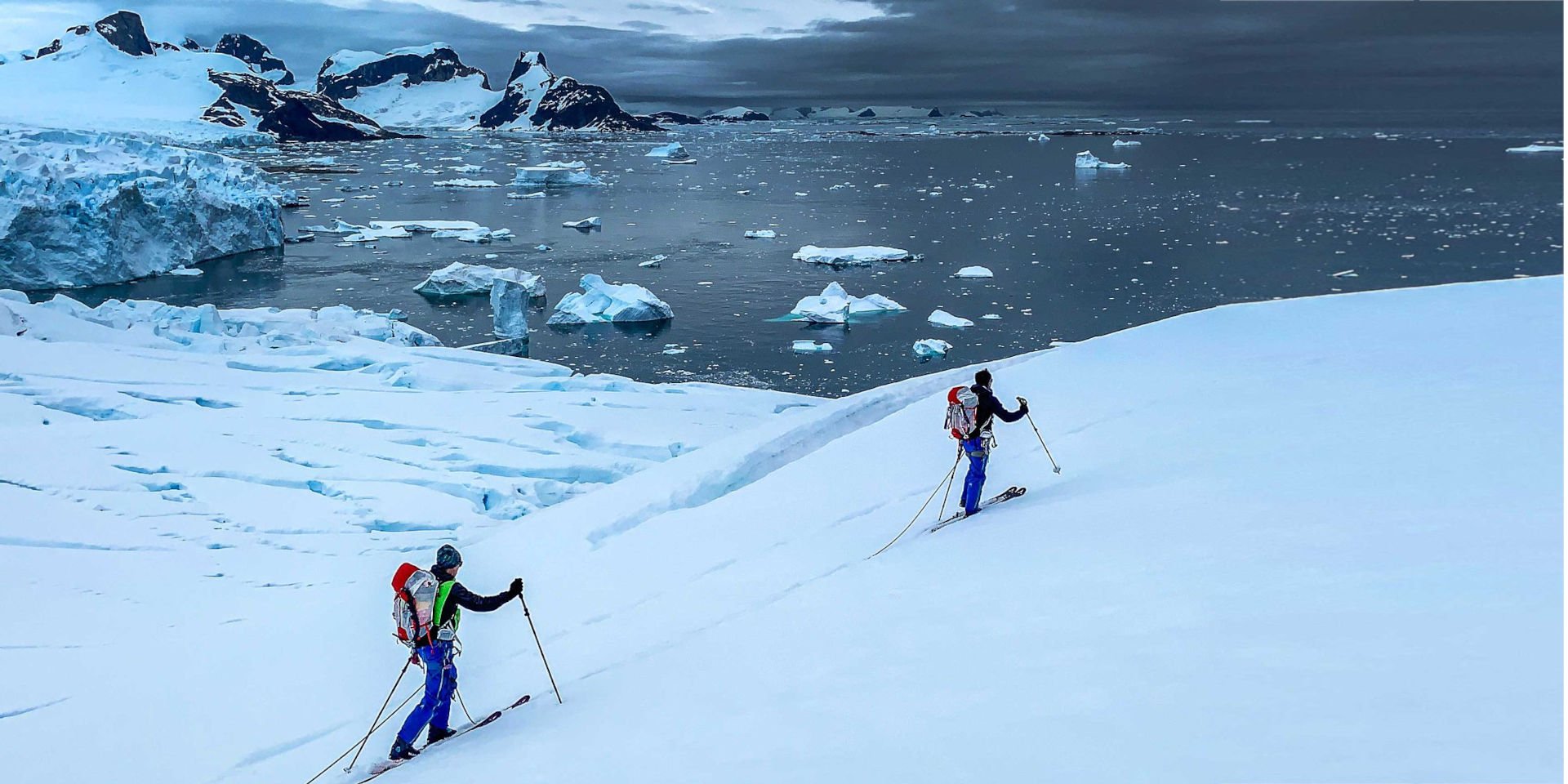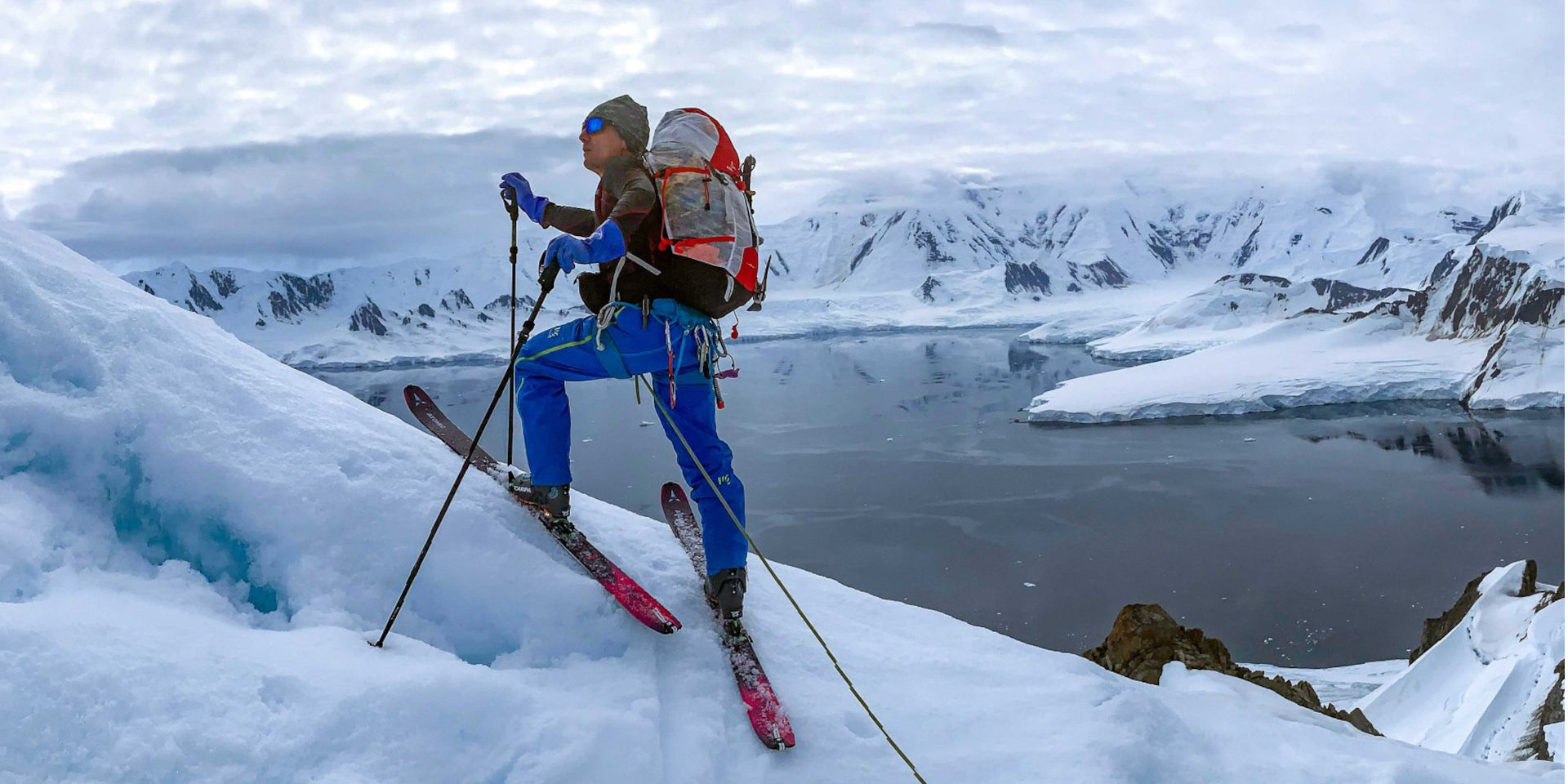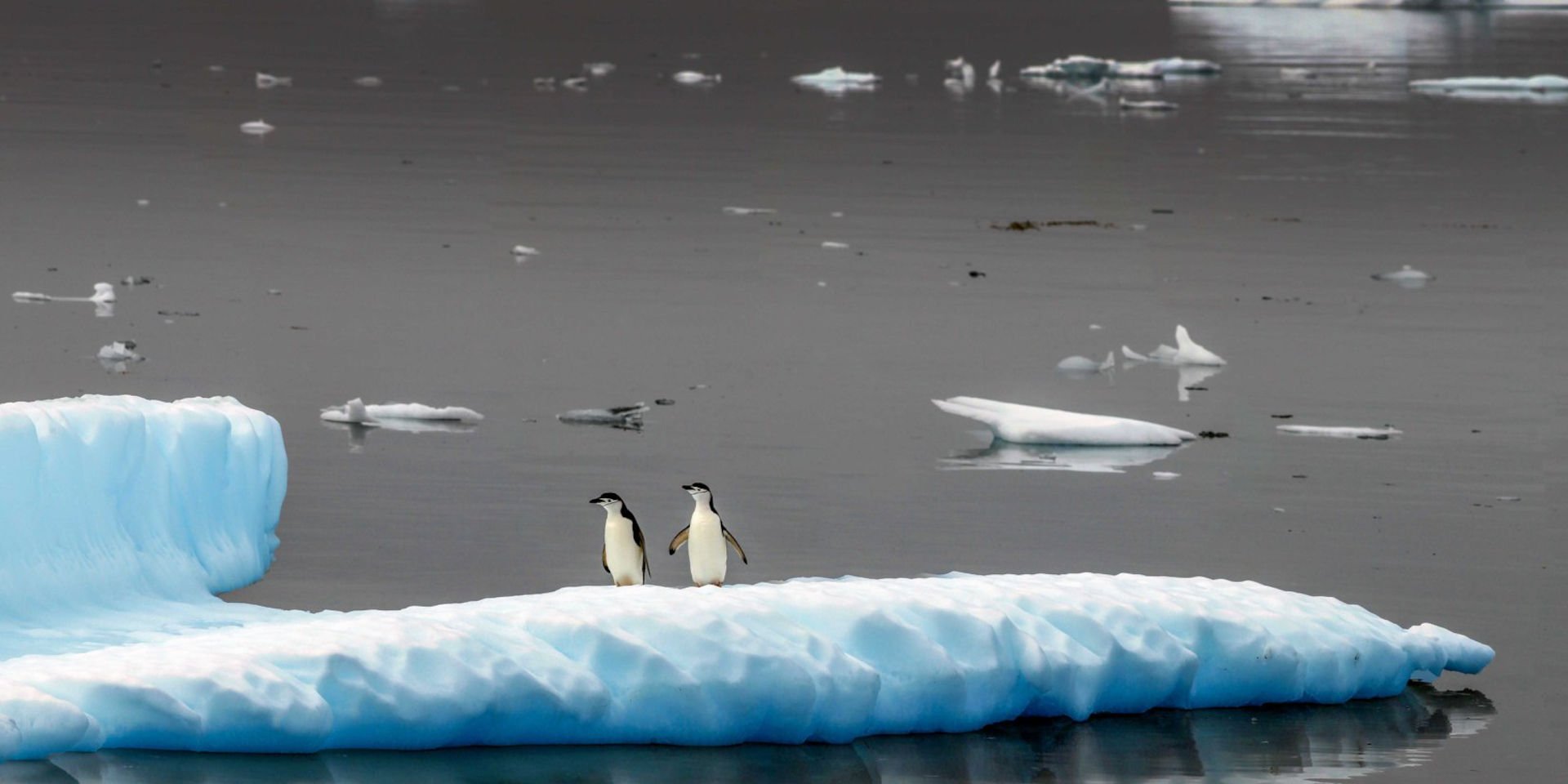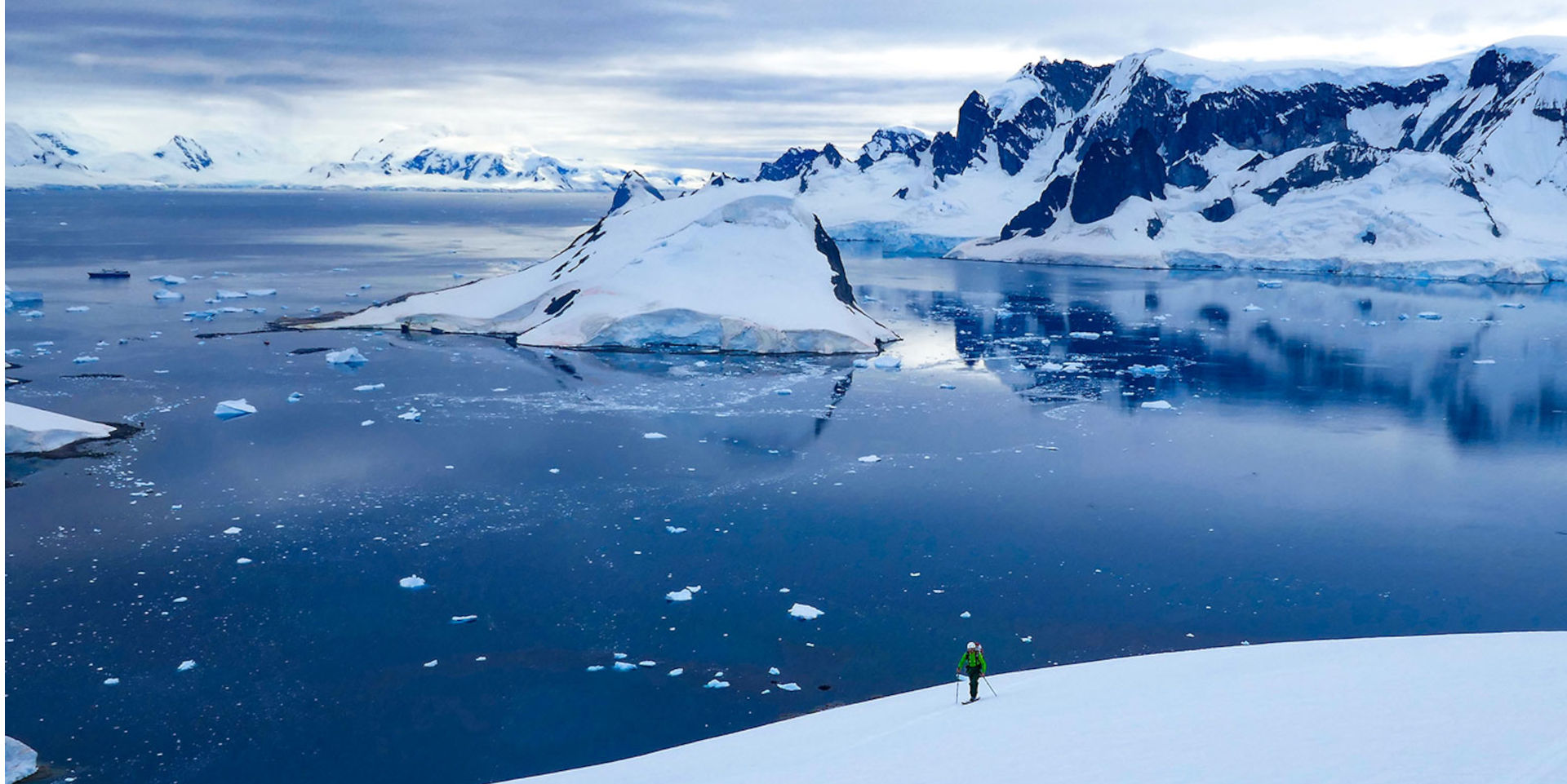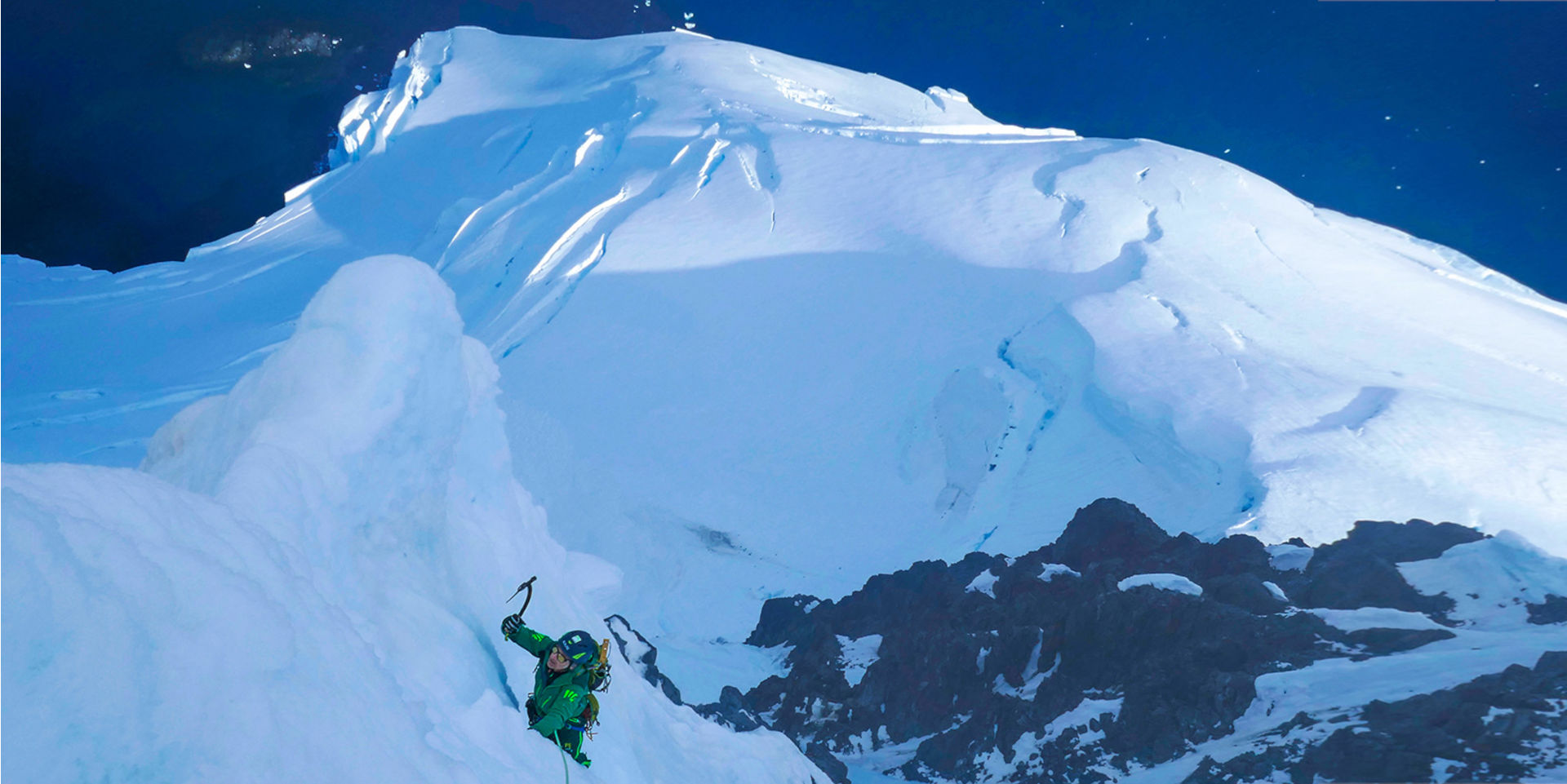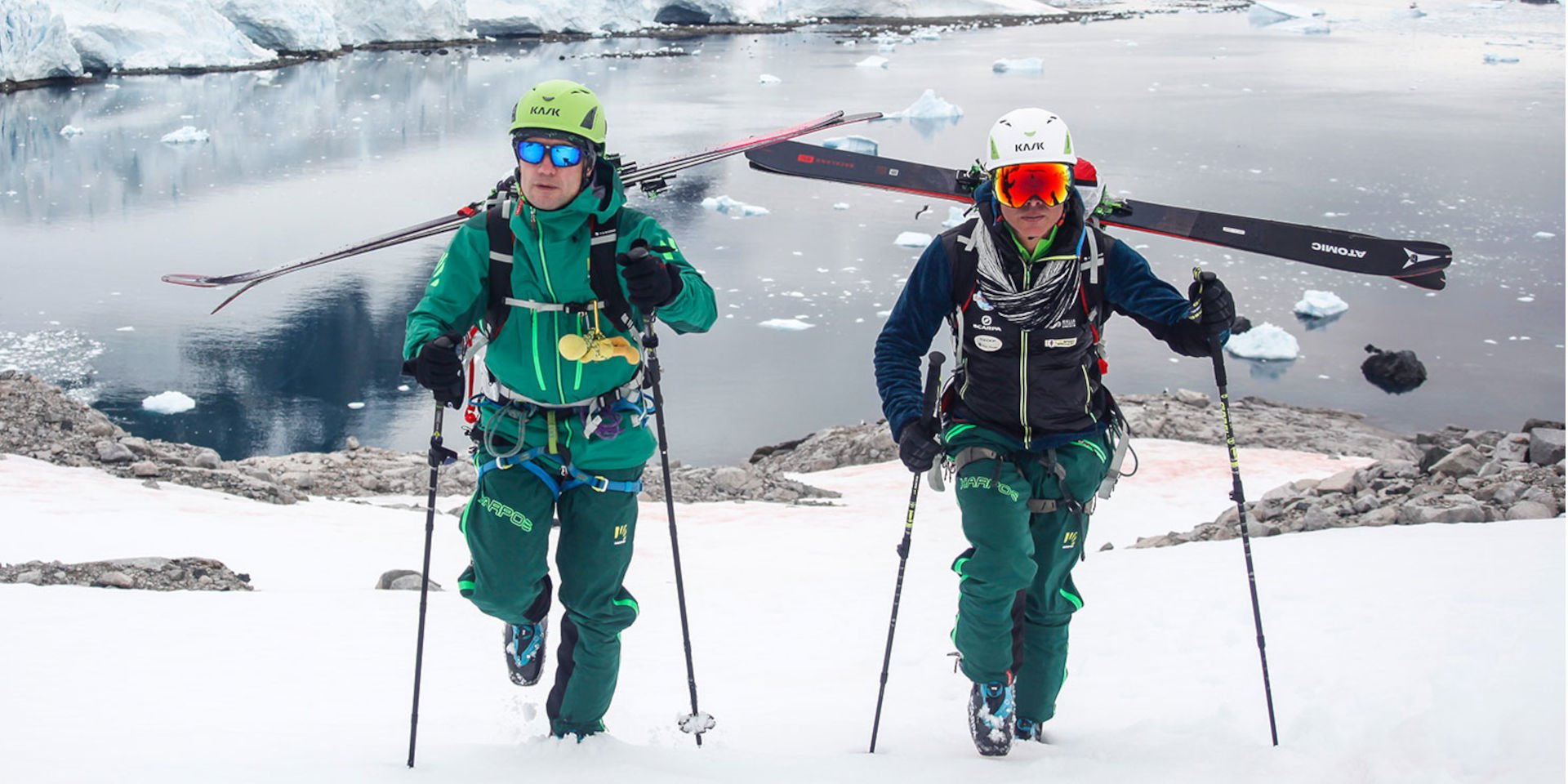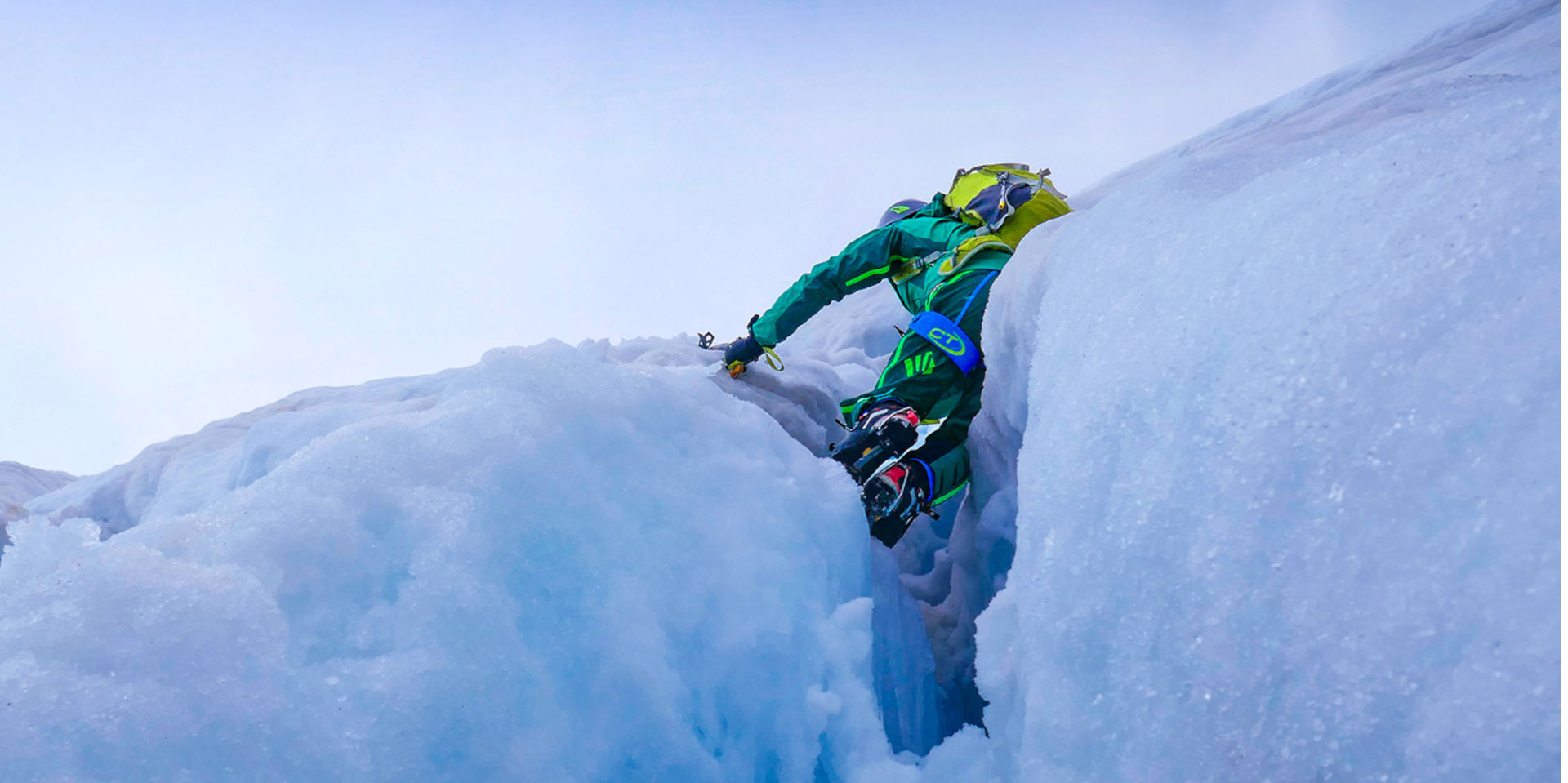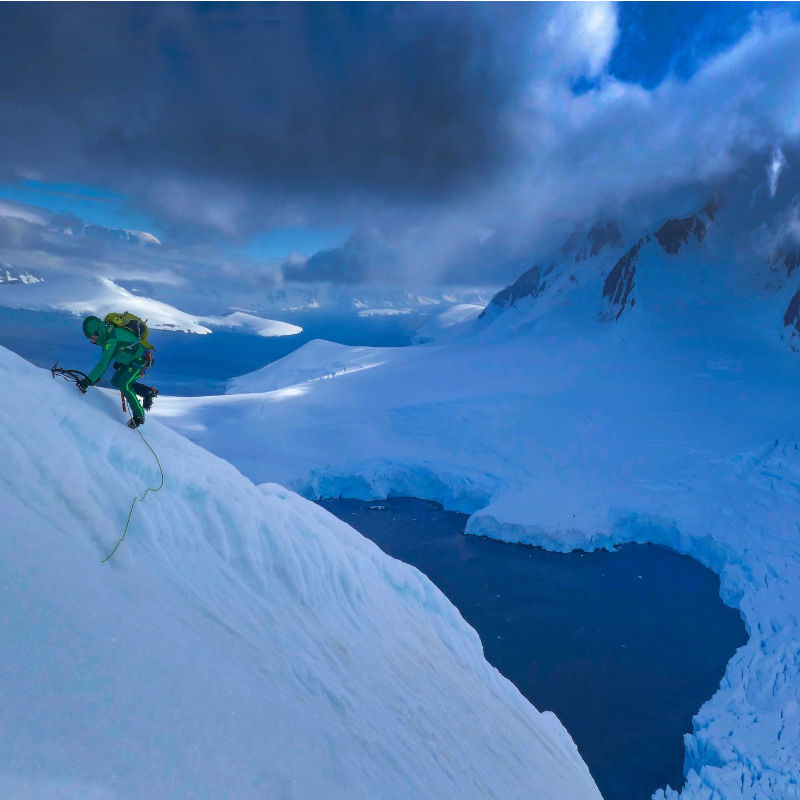
Beyond the End of the World!
Antarctica. One of the last unspoiled paradises on earth. Our explorers Gianluca Cavalli, Manrico Dell’Agnola, and Marcello Sanguineti went in search of traces of pollutants and little-known and as yet unclimbed peaks. Don’t miss their adventures aboard the Ice Bird, suspended in an austere realm of sea and ice. Beyond the end of the world.
1. JOURNEY TO ANTARCTICA
“Fin del Mundo” says a sign south of the Patagonian town of Ushuaia. This is where Team Karpos’s journey to the Antarctic Peninsula begins: six days of navigation through the Drake Passage, one of the most feared seas in the world.
January 1, 1 p.m. We leave the port of Ushuaia. The sea is calm, and a warm sun puts us in a cheerful mood. Slowly and without incident we drag ourselves up to Port Williams, along endless coasts of lenga beech and numerous flocks of birds. At the port, a girl with an old rubber dinghy takes us ashore. Everything should be resolved in a short time, but the Chilean Carabineros keep us moored at the small port. A major storm is approaching, and various bureaucratic complications, which in Chile we discover to be normal, prevent us from leaving. Ice Bird is the name of our “walnut shell,” a sailboat of about 20 meters. The name refers to the small boat that David Lewis used to make the first solo (almost) circumnavigation of Antarctica. There are nine of us in it: our young captain, Oly; his assistant, Dave; the mountain guide Phil with his clients; and the three of us, the only Italians.
January 2. After endless hours we set sail. The sea is calm, and the warm colors of the sunset make me feel good. One of our travel companions flies a drone over the boat: from the outside we are beautiful, a long strip of sparkling light passes through us. Everything goes smoothly, and we drop anchor near Lennox Island, just west of Cape Horn, the terror of navigators. Tomorrow we will no longer be able to rely on the protection of the islands; we will have to go out into the open, crossing the Drake Passage, where the two great oceans, the Pacific and the Atlantic, meet. Stories of this crossing send a shiver down my spine, but it’s better not to think about it.
January 4. Today is my daughter Valentina’s birthday. Yesterday was terrible. Huge long waves tormented us, and sailing doesn’t help. I threw up all day and I hurt everywhere. It’s 3 p.m. and I’m feeling a little better, but my stomach is still upset. Fortunately, we’re almost halfway through the passage. Cleaning the boat, then going to bed for a while. Sleep is liberating.
January 6. We see the first small Antarctic islands through the fog. Outside it’s 1° Celsius and the coast, still very far away, appears white. Everything out there seems white, cold, and motionless. Thinking about pitching a tent there makes me shiver. We’ve gotten ourselves in trouble!
4 p.m. The day goes on forever. We’ve seen huge icebergs and countless whales. Now we’re sailing along a long and vertiginous frozen coast, still far away. The fog gives the environment a surreal, harsh, and inhospitable air. The sea is calm and it’s comfortable on the boat now. We slowly advance among these huge blocks of ice. We seem to be suspended in nothingness, but we feel like we’ve reached our first goal. Climbing those icebergs would be a good and easy opportunity to get some nice shots, but our captain absolutely forbids it. He tells us that if one of those ice blocks were to flip over, we could all be dead. It doesn’t matter, because our objective is different: we want to climb rock walls — rock that we discover to be very bad, though, ground by the millennial work of the glaciers and at this moment made extremely dangerous by sudden melting.
2. EXPLORATION AND RESEARCH IN ANTARCTICA
January 9. At 4 p.m. we reach land. We have three tents to pitch, and finding a safe location is very difficult: the beach is low (so high tide could be a problem), and it is full of bird droppings and penguins. A higher flat surface at the base of a snowslide ought to be safer, though the various collapses among the gigantic series of seracs in front of us are concerning. The evenings here never end. We cook pasta with meat and drink tea. It isn’t cold but the air is damp. The landscape is fantastic. On the opposite side of the bay, we see continuous collapses and hear alarming roars. Some of them form huge waves, which fortunately break on the cliff. It seems like a war zone. And now it’s raining lightly outside. I heat some water with my Jetboil and pour it into a water bottle, which becomes scalding hot. I place it in my sleeping bag with all the damp things I’ll keep in there overnight. Everything dries as expected, but I don’t sleep much: I’m afraid of being swept away by the waves, which I think would be an inglorious end.
January 10. We set out early. We climb the slope just above the tents. The weather is bad and the snow inconsistent. The summit above us appears to be illuminated by a faint ray of sunlight, but our aim isn’t to reach it; it’s to understand what there is to climb in the valley below and, above all, to collect snow samples. These samples will be used by the Italian National Research Council to understand whether the microplastics produced by the inhabited world have reached this point. It’s a study that could significantly affect our understanding of the mechanisms that regulate the evolution of our environment and the effects of the continuous conversion of natural spaces and resources by human action.
The wet snow sticks under our skins, but we continue. Higher up, everything changes. We climb up on big icy blocks brought down by an avalanche. Now it’s cold, and crampons soon take the place of skis. The ridge is exposed and the landscape powerful. We stop again to collect snow, which must now be shattered with an ice ax. Marcello notes the elevation and position on the test tubes, and we continue toward the summit.
For us everything is an adventure. These lands are little known from a mountaineering (or any other) perspective, so we’re always moving through virgin territory. Phil, our travel companions’ guide, is one of the people who knows the most about these areas, but even for him many of these valleys remain a question mark.
3. MOUNTAINEERING IN ANTARCTICA
The Antarctic Peninsula is mountainous terrain and, like all of Antarctica, partially unexplored. Another purpose of the expedition is to explore new valleys and be the first to ascend some peaks via climbing routes. But to reach the base of these walls we are forced to cross some very treacherous glaciers filled with crevasses ...
January 16. Normally the Antarctic coast consists of frozen walls that are sometimes more than 50 meters high and at times even overhanging. The great difficulty is finding the approach points, that is, those points where the glaciers allow you to climb up to the plateaus. They are usually rocky spurs that lead to easily climbable snowslides. We are led to the only point where the glacier can be accessed. It’s no longer raining and it’s not cold, but the sky is black; the forecasts were wrong today too. After a steep slope we cross the glacier, zigzagging between the crevasses. Large, dark holes force us to take long detours, sometimes even losing elevation. We advance with great caution, roped up; an accident here would be fatal. After a rappel, large blue “toboggans” take us to the base of the wall, which we reach after about three hours of ups and downs. Now the weather is a bit better, but a cold, damp fog continues to rise from below. The couloir is above us and the blue of the good ice encourages us. Less auspicious are the huge meringues on the sides of the chute; considering the landslides of the previous days, they worry us a lot. It’s nearly noon when we attack, but here it’s almost never dark and we don’t think it will take long to get to the top anyway. Ice, like snow and water, is not my favorite element, but up here it’s so beautiful that I easily forget the fatigue and especially what looms over our heads.
After a few hours we finally emerge on top. Now it’s really cold! It’s after 9 p.m. and the sun is still above the horizon, so low it casts a bluish light on the glacier, highlighting the crevasses and any other ripples, no matter how small. From above, the sea appears motionless and smooth, dotted with large blue blocks. Everything went well. The ice meringues remained in place. The descent takes hours on a very complicated glacier, and at 1 a.m., without headlamps, we land directly on the dinghy with the last rappel.
